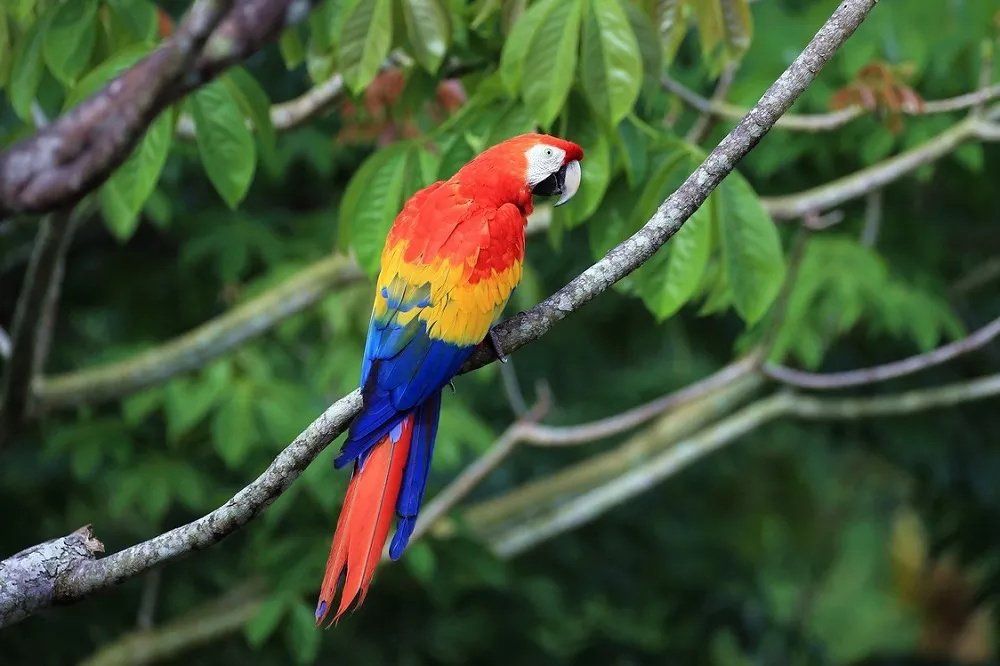The Scarlet Macaw (Ara macao) is a magnificent bird species known for its vibrant red, blue, and yellow feathers, which make it one of the most visually striking parrots in the world. The Scarlet Macaw is native to the tropical rainforests of Central and South America, where it can be found flying and feeding in large flocks. This article will provide an overview of the Scarlet Macaw, including its physical characteristics, behavior, habitat, and conservation status.
- Physical Characteristics
The Scarlet Macaw is a large parrot that can grow up to 33 inches in length and weigh up to 2.2 pounds. Its most distinctive feature is its bright red feathers, which cover most of its body. The Scarlet Macaw also has blue wings, a yellow chest and belly, and a white face with black feathers around its eyes. Its beak is curved and powerful, allowing it to crack open nuts and seeds.
- Behavior
Scarlet Macaws are social birds that live in flocks of up to 30 individuals. They are monogamous and mate for life, usually forming pairs when they are around 3-4 years old. Scarlet Macaws are also known for their loud calls, which they use to communicate with each other and to warn other birds of potential predators.
- Habitat and Range
The Scarlet Macaw is found in the tropical rainforests of Central and South America, from southern Mexico to the Amazon Basin. It prefers lowland forests and river edges, where it can find its favorite foods, such as fruits, seeds, nuts, and flowers. The Scarlet Macaw is also an important seed disperser, helping to spread the seeds of many plant species throughout the forest.
- Conservation Status
The Scarlet Macaw is listed as “Least Concern” by the International Union for Conservation of Nature (IUCN). However, it faces several threats, including habitat loss due to deforestation and illegal wildlife trade. The Scarlet Macaw is also vulnerable to hunting and poaching, as its bright feathers are highly valued for use in traditional ceremonies and for decoration.


 Facebook
Facebook  Instagram
Instagram  Youtube
Youtube 